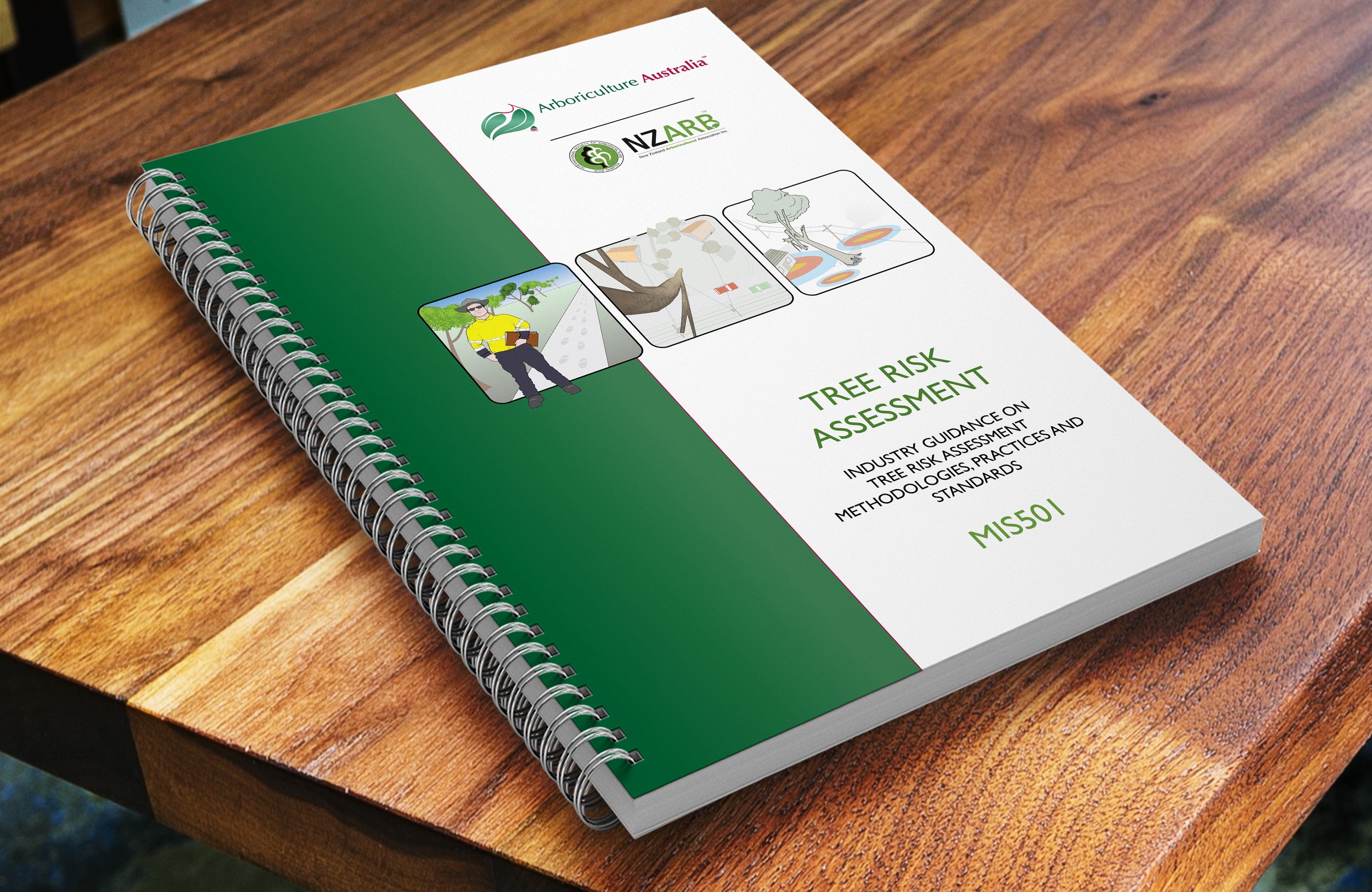
Minimum Industry Standards (MIS)
We sell Physical books and a digital subscription to all our publications. Head to the appropriate store to make your purchase.
Already have a subscription? Then log into our Reader Portal. iOS and Android mobile apps for offline reading coming soon!
The Minimum Industry Standards (MIS) are a series of peer-reviewed books that provide key knowledge for arboriculture and vegetation management workers.
The books are produced by Arboriculture Australia Ltd. and New Zealand Arboricultural Association in partnership with the wider tree care community.
The MIS are written by leading subject matter experts from around the world and are nationally reviewed and endorsed. The skills, techniques and equipment outlined in these books are agreed by industry as safe, current and correct.
-
The MISs are produced by Arboriculture Australia Ltd. and New Zealand Arboricultural Association in partnership with the following bodies:
Australian Capital Tree Community
Tasmanian Arboricultural Organisation
Queensland Arboricultural Association
South Australian Society of Arboriculture
Victorian Tree Industry Organisation
Northern Territory Arboriculture Association
Arboricultural Association of Western Australia
NSW ARB
Utility Arborist Association of Australia Committee
The information in these booklets is sourced from technical experts and leading arboricultural researchers and practitioners from all over the world. They are ‘living’ documents that are periodically reviewed to reflect up-to-date practices adopted by the industry.
MISs aim to:
Improve industry knowledge and skills
Share industry knowledge
Support training by providing an industry consensus of competency
Support a safer industry
-
The MISs are designed to be a resource for training and can assist formal training operators by providing an industry consensus of competency for particular skills.
There are plans to make the MISs available electronically to further assist training purposes, as well as instructional videos and summary sheets.
To have direct access to our resources and for a discount on each MISs, become a member today!
-
The MISs are periodically reviewed and updated to provide the industry with the best and most up-to-date information possible.
If you have any suggested improvements for the MISs, or if you know a better or safer way of conducting any tree work tasks, please share your expertise with other industry practitioners by completing the feedback form.
-
Referenced in AHC30820 Certificate III in Arboriculture
Full series available (17 titles)
MIS300 Safe Tree Work
MIS301 Arborist Knots
MIS302 Arborist Ropes
MIS303 Tree Dismantling
MIS304 Aerial Rescue*
MIS305 Tree Climbing
MIS306 Tree Inspection for Access and Work
MIS307 Crane Use in Tree Work
MIS308 Tree Pruning
MIS309 Equipment Inspection
MIS310 Tree Support Systems
MIS311 Stump Grinding
MIS312 Environmental Arboriculture
MIS313 Tree Health and Maintenance
MIS314 Utility Tree Work
MIS315 Chainsaw Operation and Tree Felling
MIS316 Chipper Maintenance and Operation
-
Referenced in AHC50520 Diploma of Arboriculture
Series in development (2 of 7 titles available)
MIS501 Tree Risk Assessment
MIS506 Tree Valuation
Click here for Training and Practitioner Resources
Why is the MIS so significant?
The MIS are significant because they are a single, industry-approved national standard and reference for our industry.
The MIS benefit you and our industry by providing:
Uniform terminology and practices to ensure the same skills and techniques are being taught throughout Australian and New Zealand and are transferable.
A reference that can be used in SWMS and SOPs to quickly and uniformly describe safe work practices.
A reference for new workers and those wishing to upskill that is written in straightforward, easy to understand language.
A reference manual for technical skills.
Guidance on best practice and the knowledge to identify and eliminate unsafe or inefficient work practices.
A national benchmark for quality and safe work practices.
Clear and consistent guidance to Registered Training Organisations on industry expectations, practices and terminology.
Consistency between classroom training and on-the-job practice.
The next generation of arborists with a comprehensive, industry-approved body of knowledge to support their training and development.
The MIS are ‘living’ documents, meaning they are periodically reviewed and updated to provide the best and most up-to-date information.
If you know of better or safer practices for tree work tasks, please share your expertise with other industry practitioners by completing the MIS Feedback Form
MIS for Students
Arb Aus and NZ Arb offer FREE access to electronic MIS (eMIS), for the duration of enrolment, to any student studying AHC30820 Certificate III in Arboriculture or AHC50520 Diploma of Arboriculture.
Access to the eMIS is organised through participating Registered Training Organisations (RTO). If you are a student enrolled in one of these courses, contact your RTO today to organise your eMIS access.
MIS for Business - Bulk Purchase of eMIS
Businesses wanting to align their operations with the MIS can purchase an annual licence to provide electronic MIS to their employees.
You can purchase specific titles or whole series (n.b. Series 5 - consulting arboriculture is still in development).
Integrate with SWMS and SOPs
Reference the MIS in your SWMS or SOPs to quickly describe safe work practices whilst keeping your safety documentation simple and easy-to-use.
Upskill and induct new workers
Provide clear, easy-to-understand guidance on work practices, written in straightforward language.
Share terminology and practices
Ensure the techniques are terminology your company uses align with national standards.
Reference manual for technical skills
Provide your crew with a comprehensive manual of techniques, including advanced techniques for climbing, rigging, felling and rescue.
Improve safety and efficiency
Ensure best practice by identifying and eliminating unsafe or inefficient work techniques
National benchmarks
Quickly and easily confirm that your work practices align with national benchmarks for quality and safety.
